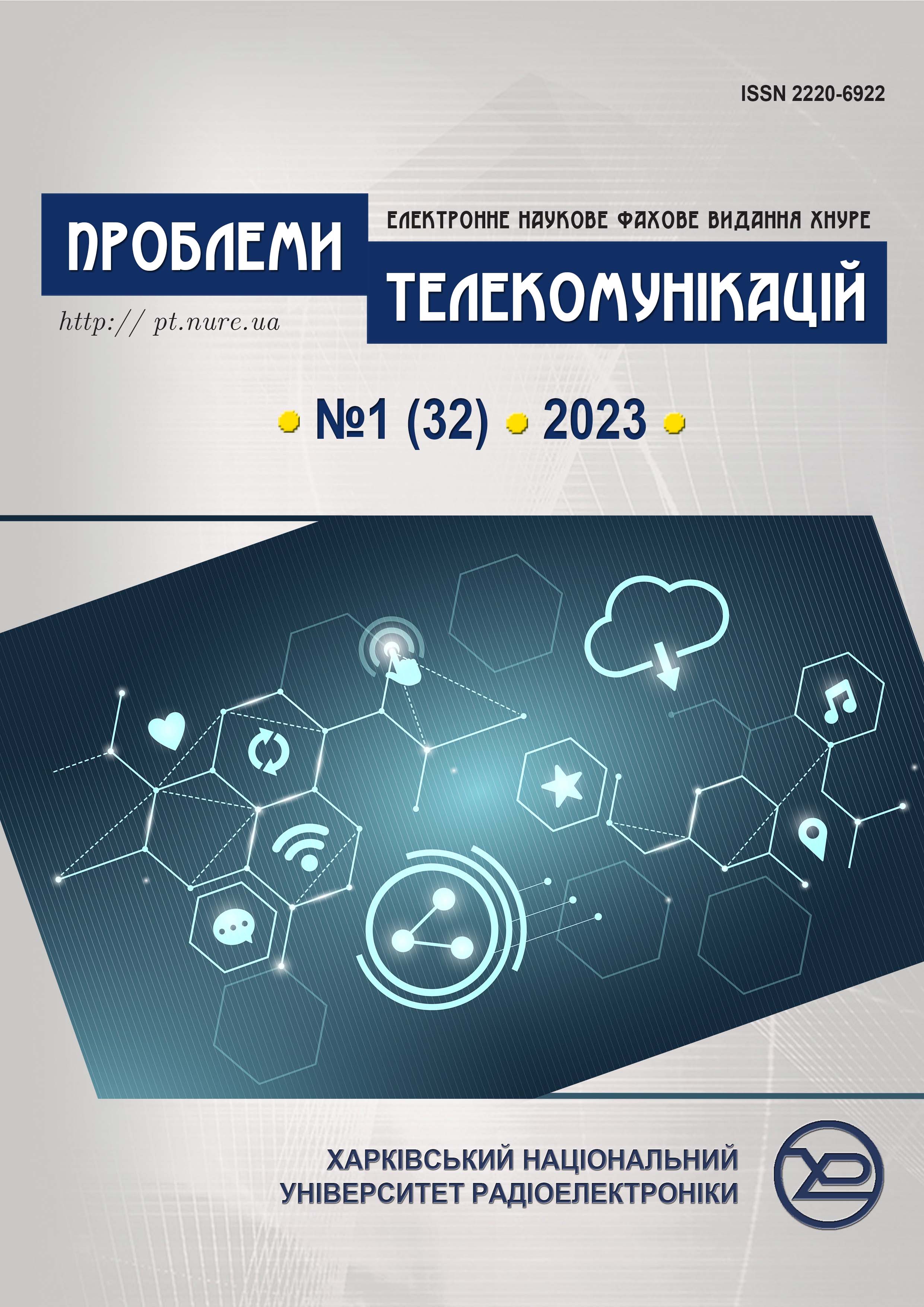Імпульсна надширокосмугова система радіозв’язку терагерцового діапазону частот
DOI:
https://doi.org/10.30837/pt.2023.1.01Анотація
У статті розглядається можливість розробки імпульсної надширокосмугової телекомунікаційної системи терагерцового діапазону (ТГц), в якій носієм інформації є імпульсний надширокосмуговий сигнал (ІНШС). Розглянуто варіант побудови трактів передачі та прийому ТГц імпульсної надширокосмугової системи радіозв’язку (ІНШСР) з урахуванням технічних характеристик ТГц-пристроїв, представлених на телекомунікаційному ринку. Одним із основних результатів є блок-схема ІНШСР терагерцового діапазону типу «точка – точка» на основі методу гетеродинування. Важливо зазначити, що вже існують технічні реалізації деяких ТГц-блоків (субгармонійний змішувач, хвилеводи, антени тощо) передаючого та приймального пристроїв, що дозволяють визначити, які пристрої надширокосмугової системи радіозв’язку потребують проєктування. Проведено розрахунок енергетичного бюджету ТГц-лінії для різних типів модуляції ІНШС, що дає змогу оцінити відстань між відповідними станціями за різних умов середовища поширення електромагнітних хвиль. Запропонований варіант системи радіозв’язку є типом «точка-точка» з використанням ІНШС у терагерцовому діапазоні. Проведено оцінку потенційної відстані між відповідними станціями прямої видимості для різних умов розповсюдження електромагнітних хвиль (ЕМХ) та типів виконаної модуляції ІНШС, яка показує, що для ідеального випадку розповсюдження ЕМХ зі збільшенням робочої частоти спостерігається збільшення відстані, що пов’язано з тим, що втрати енергії ЕМХ у вільному просторі зі збільшенням частоти компенсуються збільшенням спрямованості передавальної та приймальної антен.
##submission.downloads##
Опубліковано
Номер
Розділ
Ліцензія

Ця робота ліцензується відповідно до Creative Commons Attribution-NonCommercial-ShareAlike 4.0 International License.
Автори, які публікуються у цьому журналі, погоджуються з наступними умовами:- Автори залишають за собою право на авторство своєї роботи та передають журналу право першої публікації цієї роботи на умовах ліцензії Creative Commons Attribution License, котра дозволяє іншим особам вільно розповсюджувати опубліковану роботу з обов'язковим посиланням на авторів оригінальної роботи та першу публікацію роботи у цьому журналі.
- Автори мають право укладати самостійні додаткові угоди щодо неексклюзивного розповсюдження роботи у тому вигляді, в якому вона була опублікована цим журналом (наприклад, розміщувати роботу в електронному сховищі установи або публікувати у складі монографії), за умови збереження посилання на першу публікацію роботи у цьому журналі.
- Політика журналу дозволяє і заохочує розміщення авторами в мережі Інтернет (наприклад, у сховищах установ або на особистих веб-сайтах) рукопису роботи, як до подання цього рукопису до редакції, так і під час його редакційного опрацювання, оскільки це сприяє виникненню продуктивної наукової дискусії та позитивно позначається на оперативності та динаміці цитування опублікованої роботи (див. The Effect of Open Access).

